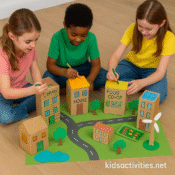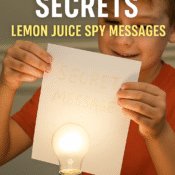
From Trash to Launch: A Hands-On STEM Rocket Adventure for Kids
What if your next space mission didn’t need fancy materials or a trip to a science lab—but could start with a plastic bottle, some tape, and a little imagination?
This DIY rocket project is more than just fun—it’s a full-scale STEM learning experience wrapped in creativity and global awareness. Kids won’t just build a bottle rocket; they’ll explore physics, test material strength, and even learn how different countries manage space junk.
Let’s launch into it!
Why a DIY Rocket Project Is a Blast (in More Ways Than One)
This hands-on activity brings together science, sustainability, and storytelling in one exciting experience. Here’s why it’s so powerful for young learners:
- STEM Concepts in Action: Kids visualise Newton’s Third Law by launching a rocket powered only by air pressure.
- Environmental Awareness: Using recycled materials teaches about waste, reuse, and resourcefulness.
- Creative Engineering: Choosing and testing materials mimics real-world aerospace design challenges.
- Global Understanding: Comparing international approaches to space debris gives kids a broader view of Earth’s orbit.
Core Activity 1: Build a Bottle Rocket Using Air Pressure
Objective: Learn Newton’s Third Law — For every action, there is an equal and opposite reaction.
You’ll Need:
- 1 empty plastic bottle (600 ml or 1.25 L works best)
- Duct tape or electrical tape
- Recycled paper/cardboard for fins
- A cork or rubber stopper that fits the bottle mouth
- A bicycle pump with a needle or valve attachment
- A washing machine drain hose (optional but ideal!)
- Safety goggles
Instructions:
- Build the Rocket Body
Tape fins to the sides of the plastic bottle. These help stabilise the flight path. - Insert the Launch System
Fit the cork or rubber stopper snugly into the bottle’s mouth. Push the pump needle through the cork, or insert a drain hose between the cork and bottle neck (for better airflow and safety distance). - Prepare for Launch
Fill the bottle with a small amount of water (about 1/5 full). This adds thrust when launched. - Pump and Release
Secure the bottle upside down on the launcher. Start pumping! Pressure will build inside the bottle until the cork pops, and—liftoff!
What They Learn:
- Physics: Newton’s Third Law
- Engineering: Aerodynamics, air pressure
- Safety: Controlling force and distance
Bonus tip: Washing machine drain hoses are often discarded appliances—easy to find, especially in developing regions where access to lab tools is limited.
Core Activity 2: The Great Material Challenge – Which Makes the Best Rocket Fins?
Objective: Explore the strength, weight, and aerodynamics of different materials.
Materials to Compare:
- Cardboard
- Aluminium foil
- Styrofoam (recycled packaging)
- Reused plastic lids or containers
Steps:
- Make identical rocket fins from each material.
- Attach them to similar-sized bottle rockets.
- Launch each one under the same conditions.
- Measure flight height or distance.
- Record and compare results.
What They Learn:
- Material science: Why some materials work better than others
- Testing and recording results: Creating fair experiments
- Environmental value: Why reuse beats waste
Global Connection: How Countries Handle Space Junk
As kids explore how to build rockets here on Earth, it’s a great opportunity to learn what’s happening above the Earth—in orbit.
Space debris is a real issue. Thousands of broken satellites, metal fragments, and rocket parts orbit the planet, posing risks to astronauts and future launches.
Here’s how some countries handle it:
| Country | Strategy |
|---|---|
| USA | Laser tracking, active debris removal |
| Japan | Electrodynamic tether experiments |
| China | Satellite nets and robotic arms |
| Australia | Space debris mapping via ground stations |
| European Union | Mission planning with low-debris policies |
Discuss with your kids:
- Why is it important to clean up space?
- Should we have international rules for space waste?
- How can our small recycling actions help both Earth and space?
More Learning Extensions
- Maths Link: Measure launch angles and estimate flight distance.
- Literacy Link: Write a “Captain’s Log” after each rocket launch.
- Art Link: Design a mission patch or rocket decal.
- Geography Link: Mark each country’s space program on a map.
Materials That Matter: Why the Washing Machine Hose Is a Game-Changer
In many countries, tools like corks or lab-grade tubing aren’t easy to find. That’s why using common items—like a washing machine drain pipe—isn’t just creative, it’s smart.
This flexible tubing can be found in most homes or repair shops. It:
- Acts as a safe launch hose
- Allows the user to stay at a safe distance
- Is cost-effective and environmentally friendly
For community-based learning or schools with limited budgets, this simple swap makes STEM more accessible for everyone.
Download the Full STEM Rocket Guide (PDF)
All the learning tools you need—packed into one handy printable!
Inside the From Trash to Launch STEM Guide, you’ll find:
- Bottle Rocket Building Instructions
Step-by-step guidance using recycled materials like plastic bottles and washing machine hoses, with tips for safe and exciting launches. - Material Comparison Challenge Sheet
A ready-to-use experiment chart for comparing cardboard, foil, foam, and other materials—perfect for budding scientists. - Global Space Debris Explorer Section
Learn how different countries are tackling space junk, with real-world examples and discussion questions to boost global awareness.
Click here to download the full guide as a printable PDF
Perfect for classrooms, STEM clubs, or fun family science days at home!
Final Thoughts: Learning Beyond the Launchpad
A bottle rocket might only fly for a few seconds—but the curiosity it sparks can last a lifetime.
This activity invites kids to be more than builders. It helps them become:
- Thinkers
- Recyclers
- Global citizens
- Inventors
- Dreamers
So, gather your recyclables, grab that old drain hose, and let your child’s next big adventure begin—from your backyard straight to the stars.




